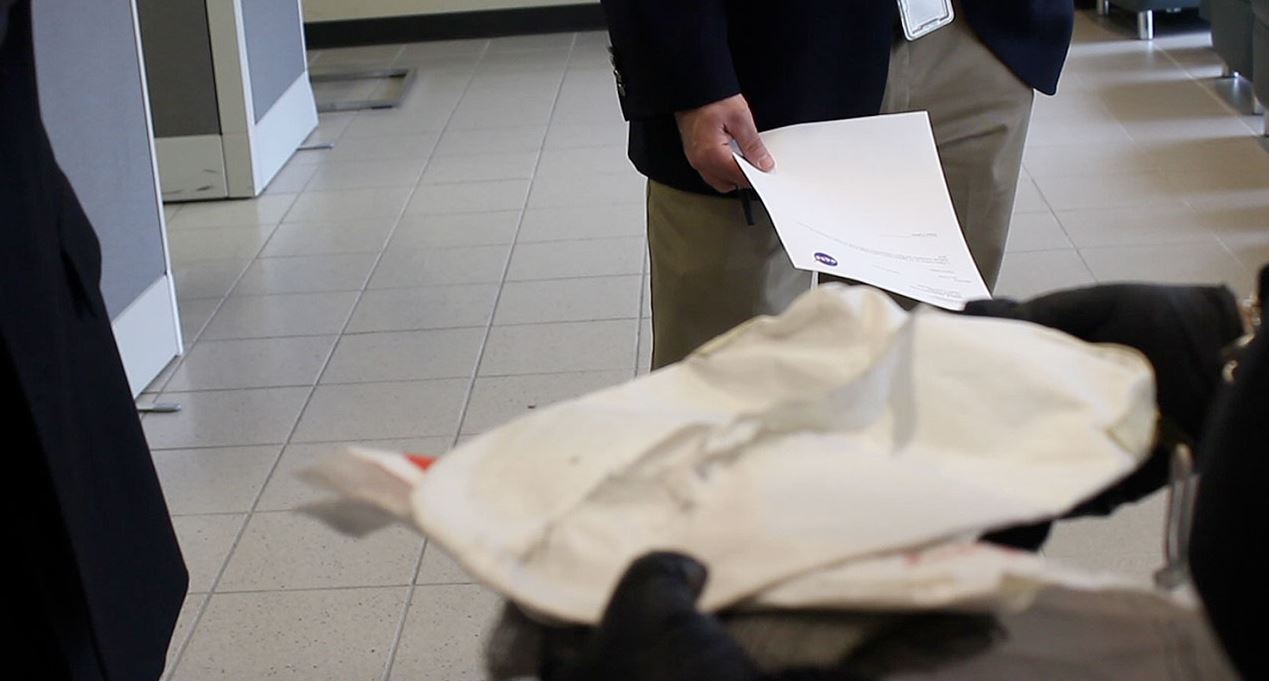Nancy Lee Carlson has filed a new lawsuit against NASA claiming the agency damaged and improperly kept lunar material tied to an Apollo 11 “lunar sample return bag” she once owned and later sold for nearly 2 million dollars. She argues that NASA’s handling of the zippered pouch and the actions of lunar sample curator Ryan Ziegler reduced the artifact’s market value and caused her humiliation, embarrassment, stress, and anxiety.
She seeks compensation for emotional distress, damage to the artifact, legal costs, and the return of any lunar particles she says remained embedded in the bag’s fibers after Apollo 11. If the material cannot be returned, she wants payment equal to the value of any samples removed during testing.

The dispute began in February 2015 when Carlson bought the 11.5 inch bag for 995 dollars at a U.S. Marshals Service auction in Texas. The listing only said it had flown on an Apollo mission. She sent the bag to Ziegler at Johnson Space Center to confirm its history.
His tests identified the interior dust as originating at Tranquility Base and tied the pouch to Neil Armstrong’s early contingency sample collection. Carlson says the testing may have torn the fabric and removed trace lunar dust.
NASA refused to return the artifact because agency records did not show it had ever been released from government ownership. Carlson then sued in both Texas and Kansas. The cases revealed that a Kansas museum had miscataloged the bag while it was on loan from NASA, which led to its mistaken forfeiture as part of a restitution order against a convicted curator. A federal judge in Kansas concluded that NASA was a victim of the mix up, but because the Marshals had sold the item and Carlson was a good faith buyer, title passed to her.

A Texas judge later ordered NASA to return the bag, which the agency did in February 2017. NASA publicly said it was disappointed and noted that the artifact was never meant to be privately owned. On July 20, 2017, exactly 48 years after the bag’s use on the Moon, Sotheby’s auctioned it for 1,812,500 dollars. The result fell short of the 2 to 4 million dollar estimate due to damages to the bag. Carlson now claims NASA’s testing and discouraging statements depressed bidding and cost her money while causing personal distress.
Carlson’s latest suit, filed on January 18, 2019 in Kansas federal court, asks for damages and the return of any lunar residue associated with the bag or compensation for its value. The filing keeps alive a rare and contentious fight over who can own and profit from artifacts and trace materials linked to the first human voyage to the Moon.
Read the full article for more details at Collect Space.



